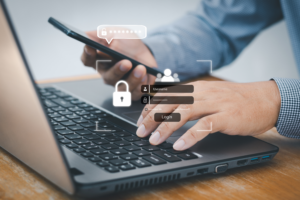
In an era where digital threats are constantly evolving, maintaining robust security measures is more critical than ever. At Bestech Private Ltd, we are committed to helping you safeguard your personal and professional data. This blog provides essential tips on creating strong passwords, recognising phishing attempts, securing your devices. Let’s explore how you can enhance your digital security and protect yourself from potential threats.
Creating Strong Passwords: Your First Line of defence
A strong password is the cornerstone of digital security. Here is how you can create and manage robust passwords:
- Use Complex and Unique Passwords
- Length and Complexity: Ensure your passwords are at least 12 characters long and include a mix of uppercase and lowercase letters, numbers, special characters.
- Avoid Common Words: Refrain from using easily guessable information like “password,” “123456,” or your name and birthdate.
- Unique for Each Account: Use different passwords for each of your accounts to prevent a single breach from compromising multiple services.
- Utilise Password Managers
Password managers can generate, store, manage complex passwords for you:
- Generate Strong Passwords: Most password managers have a built-in password generator to create highly secure passwords.
- Store Securely: They store your passwords in an encrypted vault, accessible only with a master password.
- Auto-Fill Feature: Password managers can automatically fill in your login details, enhancing both security and convenience.
- Enable Two-Factor Authentication (2FA)
Two-factor authentication adds an extra layer of security:
- Code Verification: Alongside your password, you will need to enter a code sent to your mobile device or email.
- Authenticator Apps: Use apps like Google Authenticator or Authy for generating time-based codes, which are more secure than SMS-based codes.
Recognising Phishing Attempts: Stay Vigilant
Phishing attacks are deceptive attempts to steal your personal information. Here is how to identify and avoid them:
- Identify Suspicious Emails and Messages
- Check the Sender: Verify the sender’s email address. Phishing emails often come from addresses that mimic legitimate sources but with slight misspellings or unusual domains.
- Look for Red Flags: Be wary of urgent requests, grammatical errors, suspicious links. Phishing emails often create a sense of urgency to trick you into acting without thinking.
- Avoid Clicking on Unverified Links
- Hover to Preview: Hover over links to see the actual URL before clicking. Ensure it matches the supposed sender’s website.
- Type URLs Directly: Instead of clicking on links in emails, type the URL directly into your browser to ensure you are visiting the legitimate site.
- Verify Requests for Personal Information
- Contact the Source Directly: If you receive a request for personal information or payment details, contact the company directly using a verified phone number or email address.
- Beware of Attachments: Avoid opening attachments from unknown or unexpected sources. They may contain malware designed to steal your data.
Securing Your Devices: Protect Your Digital Environment
Your devices are gateways to your personal information. Here is how to keep them secure:
- Keep Software Updated
- Automatic Updates: Enable automatic updates for your operating system, antivirus software, applications to protect against the latest threats.
- Patch Management: Regularly check for and install patches and updates for all software, including less frequently used programs.
- Use Antivirus and Anti-Malware Software
- Install Reliable Software: Use reputable antivirus and anti-malware programs to detect and remove threats.
- Regular Scans: Schedule regular scans to ensure your system remains clean and secure.
- Secure Your Network
- Change Default Settings: Change default usernames and passwords for your router and other network devices.
- Use a Strong Wi-Fi Password: Ensure your Wi-Fi network is secured with a strong password and use WPA3 encryption if available.
- Guest Network: Set up a guest network for visitors to keep your main network more secure.
- Enable Device Encryption
- Encrypt Sensitive Data: Use built-in encryption features like BitLocker for Windows or File Vault for macOS to protect your data in case your device is lost or stolen.
- Secure Backup: Regularly back up your data to a secure location, ensuring it is also encrypted.

